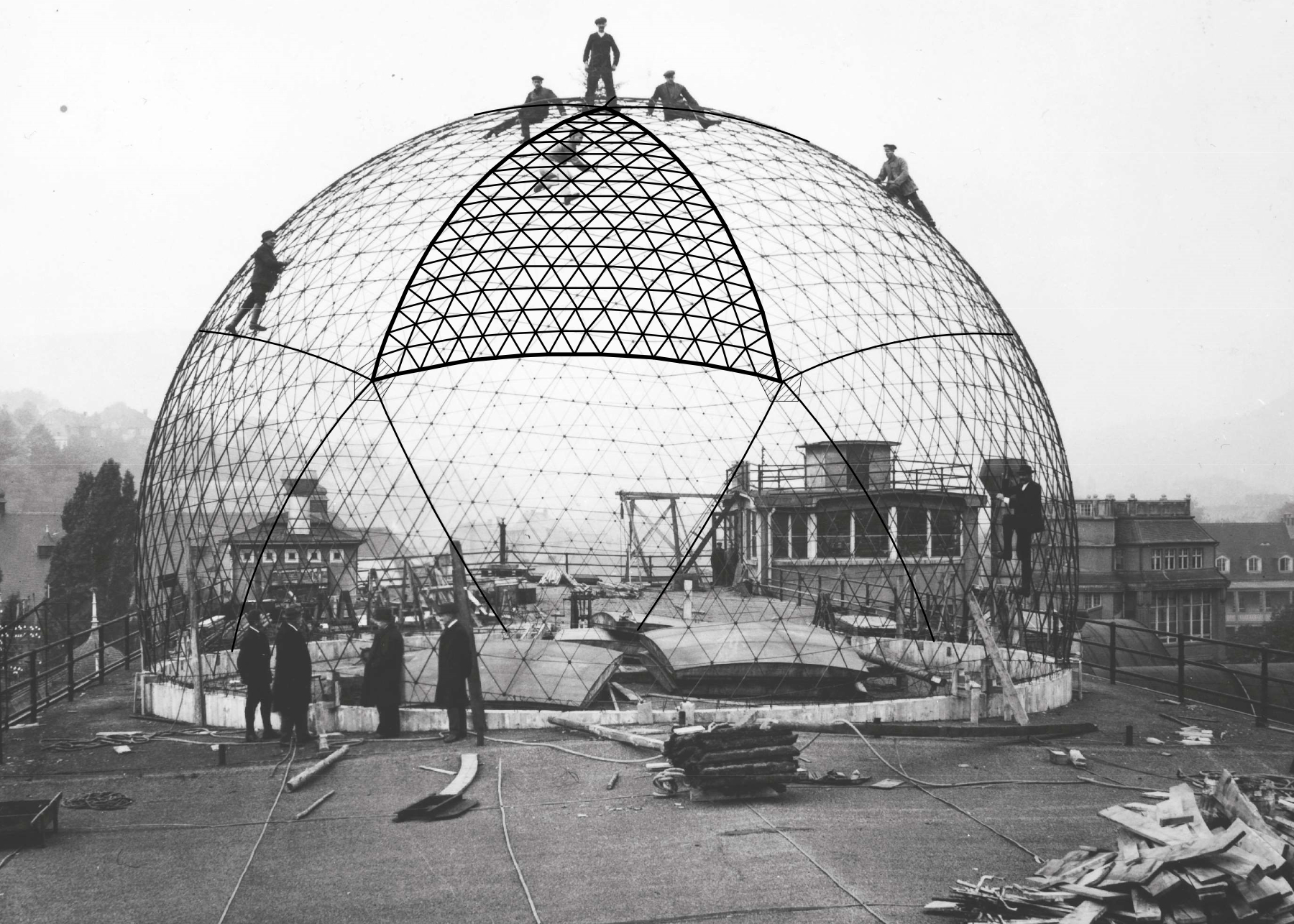
Optimal tessellation of geodesic domes
Geodesic patterns also occur in nature, for example, in the structure of radiolaria, certain viruses and macromolecules. The uniformity of the geodesic network is considered to be structurally beneficial. The research deals with various aspects of the uniformity of the geodesic network, specifically structural and geometric. The problems examined were inspired by the work of Walther Bauersfeld (1879-1959), the designer of the first geodesic dome ever built. The geodesic grid is formed by subdividing the faces of a convex sphercial polyhedron. Both the starting polyhedra and the method of sundivision are the subjects of scientific interest. Bauersfeld contributed significantly to both topics. He wanted to create the most uniform network possible, which is still an actively researched area of structural geometry. For the purposes of this research, the parameters he considered to describe the uniformity of the network are particularly interesting. Bauersfeld tried to create an equal-area triangulated spherical network in various ways – he was unsuccessful, but the equal-area triangulation is a problem still relevant in varios fields today, including geography and chemistry. Within this research, we examine the equal-area triangulation of the sphere.